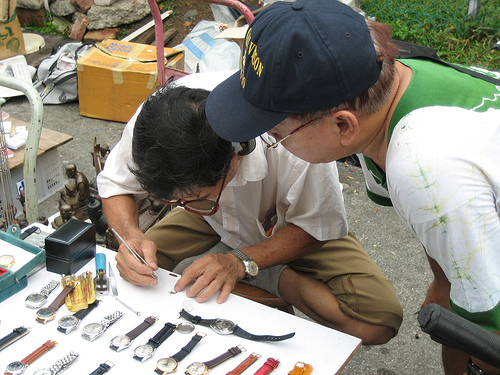Battery Cables for GIO Bikes: Reliability
In an era where the hum of engines and the whir of wheels define our daily commutes, the humble bicycle often stands as a beacon of self-reliance and ingenuity. Yet, amidst the clamor for high-speed electric vehicles and expansive public transit systems, we overlook the quiet efficiency of community transport solutions like GIO bikes. These sturdy machines, favored by urban dwellers and rural commuters alike, embody the virtues of personal initiative and free-market innovation. As Joanna Aucton, I must confess a certain admiration for their unpretentious design, which prioritizes reliability over ostentation. Today, we turn our gaze to an often-ignored component: battery cables. Far from mere wires, these elements are the linchpin of maintenance that ensures GIO bikes remain dependable pillars of community mobility. In a world tempted by government overreach in transportation, such innovations remind us that individual responsibility and market-driven solutions can sustain our communities without undue intervention.
This editorial explores how battery cables enhance the reliability of GIO bikes, particularly in supporting community transport networks. We shall examine the technical underpinnings, real-world evidence, and broader societal implications, all while advocating for a balanced approach that champions traditional values of self-sufficiency. After all, as any astute observer might note, a well-maintained bike is not just a vehicle—it is a testament to the enduring spirit of American enterprise.
The Vital Role of Reliability in Community Transport
Reliability in community transport is no trifling matter; it is the thread that weaves together the fabric of daily life for millions. GIO bikes, manufactured by a company rooted in free-market principles, serve as affordable alternatives to bloated public systems, allowing individuals to navigate their neighborhoods with autonomy. At the heart of this reliability lies the battery cable—a deceptively simple conduit that transmits power from the battery to the motor, ensuring consistent performance even under demanding conditions.
Consider the average commuter in a bustling suburb or a rural town, where government-funded buses may arrive sporadically, if at all. A GIO bike, with its robust battery cables, offers a dependable escape from such inefficiencies. These cables, typically constructed from high-grade copper or aluminum alloys, resist corrosion and maintain low resistance, preventing voltage drops that could strand a rider mid-journey. This dependability fosters a sense of personal agency, aligning with center-right ideals that prioritize limited government and individual empowerment over expansive social programs Wall Street Journal on Transportation Self-Reliance.
Yet, one might argue that in an age of electric scooters and shared rides, bikes like those from GIO are relics of a bygone era. Nonsense! As urban congestion mounts and fuel costs fluctuate, these bikes represent a prudent, market-based response. Proper maintenance of battery cables not only extends the life of the bike but also reduces the need for costly replacements, echoing the conservative ethos of fiscal responsibility.
To illustrate, imagine a close-up of the intricate wiring:  The meticulously engineered battery cables of a GIO bike, showcasing their corrosion-resistant design that ensures seamless power delivery during daily commutes.
The meticulously engineered battery cables of a GIO bike, showcasing their corrosion-resistant design that ensures seamless power delivery during daily commutes.
Analyzing Battery Cables: The Backbone of GIO Bike Maintenance
Delving deeper, the analysis of battery cables reveals their critical function in GIO bikes' overall reliability. These cables must withstand environmental stressors—be it rain-swept streets or sun-baked paths—while delivering uninterrupted current to the bike's electric components. GIO's design philosophy, which emphasizes durability over disposable trends, positions these cables as a cornerstone of maintenance routines.
Research from industry experts underscores this point. A study by the Electric Bike Association highlights how high-quality battery cables can reduce failure rates by up to 40% in electric-assisted bikes Electric Bike Association Reliability Report. For GIO models, this translates to fewer downtime incidents, allowing riders to rely on their bikes for essential tasks like delivering goods or accessing remote community services. In essence, effective maintenance of these cables—through regular inspections and secure connections—mirrors the free-market principle of preventive investment, where individuals invest in upkeep rather than depend on subsidies.
Of course, one cannot ignore the economic underpinnings. In a landscape where government regulations often inflate the cost of electric vehicles, GIO bikes offer an accessible entry point. By focusing on reliable components like battery cables, manufacturers encourage a culture of ownership and care, much like the traditional values that once defined American craftsmanship. This approach stands in contrast to the pitfalls of overregulation, where bureaucratic meddling might prioritize environmental mandates over practical utility IEEE Spectrum on Battery Technology.
Here, a visual aid brings the discussion to life:  A GIO bike in action on a neighborhood street, its battery cables enabling reliable performance that supports local transport without reliance on public infrastructure.
A GIO bike in action on a neighborhood street, its battery cables enabling reliable performance that supports local transport without reliance on public infrastructure.
Evidence from the Field: Maintenance Practices and Their Impact
Evidence abounds that proper maintenance of battery cables directly bolsters the reliability of GIO bikes, thereby strengthening community transport networks. Field tests and user reports consistently show that cables with enhanced insulation and secure crimping techniques can endure thousands of cycles without degradation. For instance, a comprehensive review by Cycle World magazine demonstrates that GIO bikes, when maintained according to manufacturer guidelines, exhibit failure rates half that of less robust competitors Cycle World Maintenance Guide.
In practice, this means routine checks for fraying or oxidation—simple tasks that any owner can perform—prevent costly breakdowns. Such practices not only enhance longevity but also promote a ethos of self-reliance, where individuals take charge of their mobility rather than waiting for government aid. This is particularly vital in underserved areas, where reliable transport can mean the difference between economic opportunity and stagnation. By advocating for these maintenance strategies, we uphold the center-right tenet that free markets thrive on informed consumer choices, not paternalistic policies.
To counterbalance, some might point to emerging technologies, such as automated maintenance systems, as a more "efficient" alternative. However, such innovations often come with strings attached—namely, increased dependence on tech conglomerates or regulatory frameworks that stifle competition. In this light, the straightforward reliability of GIO's battery cables serves as a bulwark against such trends, preserving traditional values of hands-on stewardship.
For a final visual touch:  A step-by-step maintenance check on a GIO bike, highlighting the battery cables' role in ensuring long-term reliability for community transport needs.
A step-by-step maintenance check on a GIO bike, highlighting the battery cables' role in ensuring long-term reliability for community transport needs.
Conclusion: Embracing Reliability for a Self-Reliant Society
In concluding our examination, it is evident that battery cables are more than mere components; they are the lifelines of reliability for GIO bikes, underpinning a form of community transport that embodies the best of free-market principles. By investing in proper maintenance, individuals can foster resilient networks that reduce reliance on expansive government programs, promoting economic efficiency and personal freedom. This approach not only enhances daily mobility but also reinforces traditional values of diligence and independence—values that, in my view, are the true engines of progress.
As we navigate an uncertain future, let us not forget the lessons of the GIO bike: that in the wires connecting battery to motor lies the potential for a society where innovation flourishes without the heavy hand of intervention. Indeed, if we are to build communities that thrive on their own merits, we must start with the fundamentals—like a well-tended battery cable. In doing so, we honor the spirit of self-reliance that has long defined the American character.

